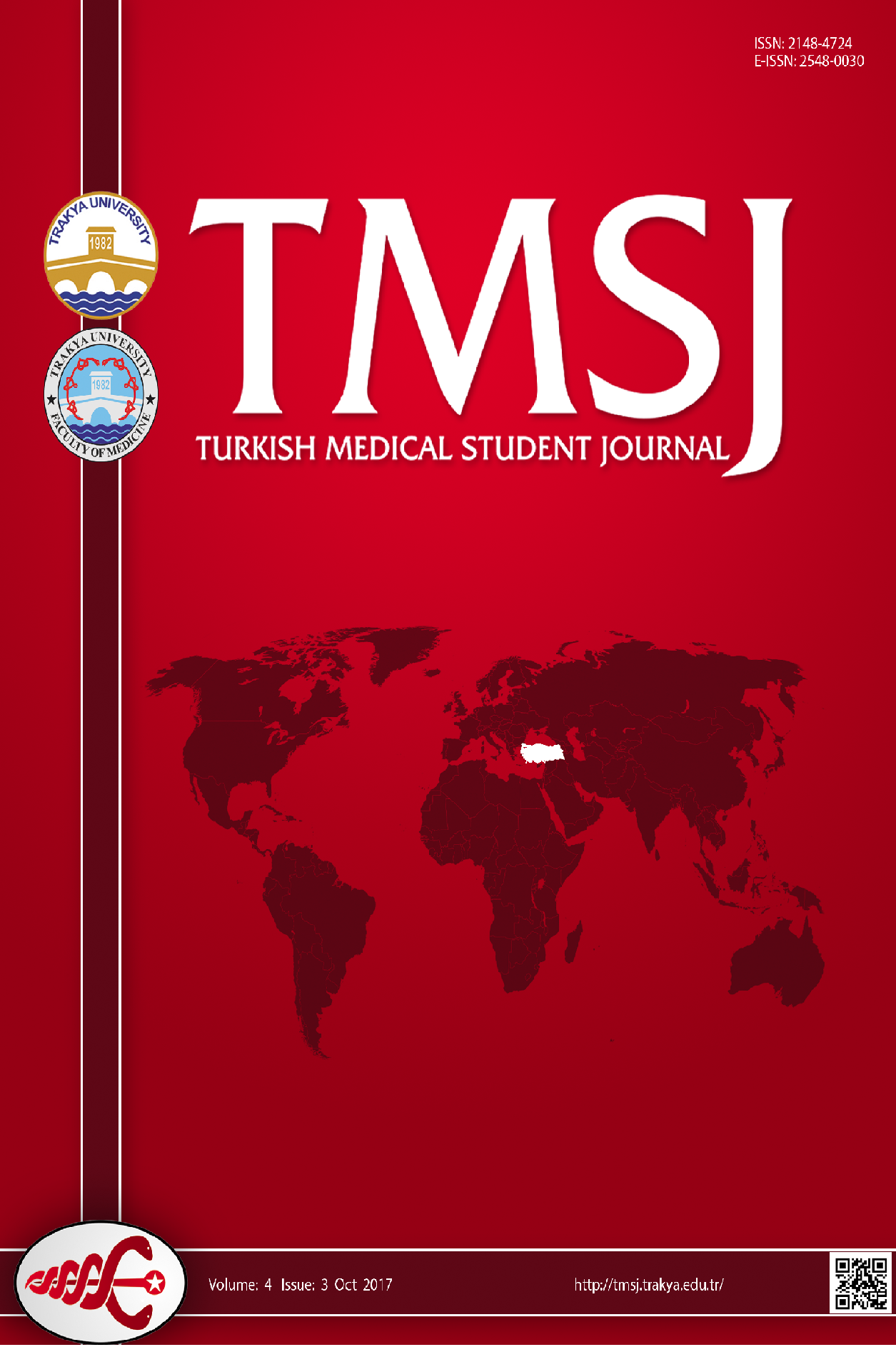
Turkish Medical Student Journal
Yazarlar: Zainab Akmal Abbasi, Moazzam Ali, Syed MuhammadAli Shah
Konular:-
Anahtar Kelimeler:Influenza,Knowledge,Students
Özet: Aims: The aim of this study is to seek perception of clinical students concerning Pandemic H1N1 Influenza and its relation with the social and demographic determinants. We chose medical students as subjects of the study because this stratum is looked upon by the general population as a vital media to convey key directives regarding disease prevention, control and management. The important thing about this study is that it is the first of its kind to be conducted in medical institutes of Punjab. It paves a way for further studies aimed at pinpointing attitude and practices regarding Pandemic H1N1 Influenza among medical and paramedical staff. Our study can assist health care authorities unveil the knowledge gaps by developing educational campaigns. Methods: Data was collected through distribution of self-administered questionnaires to 300 students selected by the lottery method considering stratified random sampling. The study included 3rd, 4th and final year Bachelor of Medicine and Bachelor of Surgery students. Questions were asked about signs and symptoms, source of information, mode and route of transmission, mainly affected organs, sample to be tested, availability of treatment and vaccination, spread of infection and requirement of urgent interventions. The information collected was entered and analyzed through Statistical Package for Social Sciences Software version 23. Results: With 100% response rate, the major source of information remained as doctors (44.3%) and the common sign reported was runny nose (33.7%). The mean Pandemic H1N1 influenza knowledge point±standard deviation was 6.49±1.94 degrees. Rate of medical students, who knew about causative agent was 96.3%, route of transmission 69.7%, mode of transmission 62.3%, correct complications 77%, treatment available 66.7%, vaccine availability 41%, test availability 64.3%, specimen of choice to diagnose 29.3%, organ chiefly affected 49.3% and situations requiring urgent intervention 70%. Only 25.3% were aware of the fact that water is not responsible for the spread of the virus. Knowledge of each following year was higher. Female gender remained significant predictor in majority of questions. Conclusion: The study described that the knowledge of medical students regarding Pandemic H1N1 Influenza was moderate. The awareness about disease transmission and management was found to be inadequate. The majority had some misconceptions about the disease. The study provides the pace to disseminate awareness about this infection among students by organizing workshops and seminars.